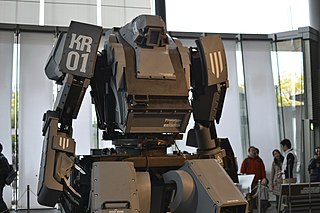
In science fiction, mecha or mechs are giant robots or machines typically depicted as piloted and as humanoid walking vehicles. The term was first used in Japanese after shortening the English loanword 'mechanism' or 'mechanical', but the meaning in Japanese is more inclusive, and 'robot' or 'giant robot' is the narrower term.

Sin is a first-person shooter video game developed by Ritual Entertainment and published by Activision in 1998. It uses a modified version of the Quake II engine. Sin is set in the dystopian future of 2037, where John Blade, a commander in a security force named HardCorps in the megacity of Freeport, is tasked to rid the city of a recreational drug that may be tied to the rival biotechnology megacorporation, SinTek.
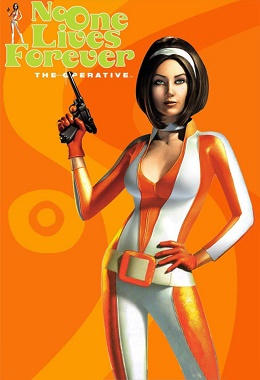
The Operative: No One Lives Forever is a first-person shooter video game with stealth gameplay elements, developed by Monolith Productions and published by Fox Interactive, released for Windows in 2000. The game was ported later to the PlayStation 2 and Mac OS X in 2002.

Monolith Productions, Inc. is an American video game developer based in Kirkland, Washington. The company has been a subsidiary of Warner Bros. Games since August 2004. It formerly published third-party games in the 1990s.
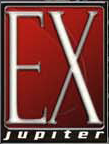
LithTech is a game engine developed by Monolith Productions and comparable with the Quake and Unreal engines. Monolith and a number of other video game developers have used LithTech as the basis for their first-person shooter games.

Hyperion Entertainment CVBA is a Belgian software company which in its early years focused in porting Windows games to Amiga OS, Linux, and Mac OS. In 2001, they accepted a contract by Amiga Incorporated to develop AmigaOS 4 and mainly discontinued their porting business to pursue this development. AmigaOS 4 runs on the AmigaOne systems, Commodore Amiga systems with a Phase5 PowerUP accelerator board, Pegasos II systems and Sam440/Sam460 systems.
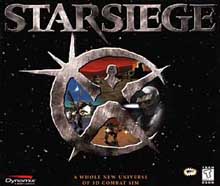
Starsiege is a mecha-style vehicle simulation game developed by Dynamix and released in 1999. Starsiege is set in the Metaltech/Earthsiege universe, which contains its predecessors Earthsiege (1994), Battledrome (1994), and Earthsiege 2 (1996). This universe also includes action game Hunter Hunted (1996), strategy games Mission Force: Cyberstorm (1996) and Cyberstorm 2: Corporate Wars (1998). It also includes the sequels Starsiege: Tribes and all subsequent Tribes titles. In 2015, this game and the rest of the Metaltech/Tribes series were released as freeware by Hi-Rez Studios, but Battledrome and the Cyberstorm series were not.

MechCommander is a real-time tactics video game based on FASA's BattleTech/MechWarrior franchise, developed by FASA Interactive and distributed by MicroProse in 1998. An expansion pack, Desperate Measures, was released in 1999.
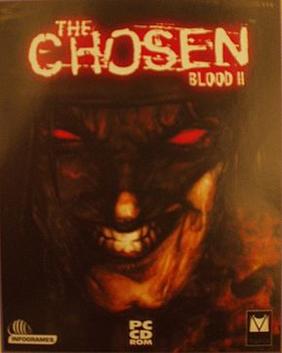
Blood II: The Chosen is a first-person shooter video game developed by Monolith Productions and distributed by GT Interactive. Unlike the first installment, Blood, which was set in 1928, it takes place in the year 2028, so in addition to conventional weapons and magical items also incorporates science fiction technology, mostly falling under the cyberpunk genre, and elements of dystopian fiction. Much like its predecessor, the game contains a significant amount of graphic violence and black humor.

AH-64D Longbow is a realistic combat flight simulator of the AH-64D Apache Longbow attack helicopter. Released on June 3, 1996, for the PC, this simulation was developed at Origin Systems. AH-64D Longbow was the second simulator released under the Jane's Combat Simulators line from Electronic Arts.

Armored Core is a 1997 third-person shooter mecha video game developed by FromSoftware and published by Sony Computer Entertainment for the PlayStation. It was originally released in Japan by FromSoftware in July 1997 and in North America in October 1997 and Europe in 1998 by Sony Computer Entertainment. The game is the first entry in the Armored Core series. A digital port was released in 2007 in Japan and 2015 in North America on the PlayStation Network as a part of the PSone Classics line of games.
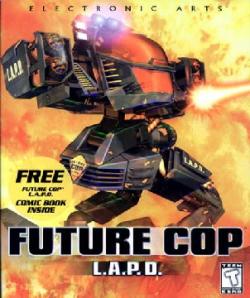
Future Cop: LAPD is a third-person shooter developed by EA Redwood Shores and published by Electronic Arts and released first for the PlayStation, then Mac OS and Microsoft Windows. Future Cop was originally developed as an installment of the Strike series.
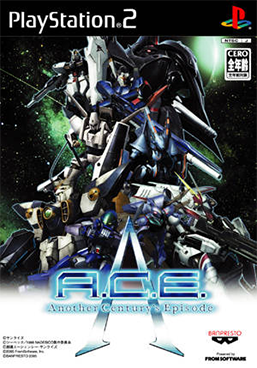
Another Century's Episode is a 2005 third-person shooter video game published by Banpresto in Japan for the PlayStation 2. The player controls a mech from one of nine different anime robot franchises to destroy opposing forces before they steal a prized energy source for devious purposes. The game is divided into several different missions, where players use their mech and arsenal of weapons to fulfill mission objectives, ranging from destroying enemy machines to protecting a specific target.

MechWarrior 4: Vengeance is a vehicle simulation game, developed by FASA Interactive and published by Microsoft. It was released on November 22, 2000. It is the fourth game in MechWarrior series. It takes place in BattleTech universe where the pinnacle of all war machines are huge, heavily armed robots called BattleMechs. The player pilots one of these "'Mechs" and uses variety of available weapons to battle enemy 'Mechs, tanks and other vehicles. An expansion pack, MechWarrior 4: Black Knight, was released in 2001, and a subsequent stand-alone expansion, MechWarrior 4: Mercenaries, was released on November 7, 2002. Two smaller expansions, Inner Sphere 'Mech Pak and Clan 'Mech Pak, were also released in 2002.

MechWarrior 3 is a vehicle simulation game, part of the MechWarrior series. It featured a new 3D accelerated graphics engine at the time of its release. The game contains over 20 missions, with access to 18 different mechs. A novelization called Trial Under Fire was written by Loren L. Coleman.

F.E.A.R. 2: Project Origin is a 2009 first-person shooter psychological horror video game for Microsoft Windows, Xbox 360, and PlayStation 3. It is the second game in the F.E.A.R. series and is followed by F.E.A.R. 3. Developed by Monolith Productions and published by Warner Bros. Games, it was released for all platforms in February 2009. In September 2009, Monolith released a single-player DLC pack, F.E.A.R. 2: Reborn. In March 2015, both the base game and Reborn were made available on GOG.com. In November 2021, the F.E.A.R. franchise, including Reborn, was added to Microsoft's backward compatibility program, making the games playable on the Xbox One and Xbox Series X/S. Project Origin ignores the events of both TimeGate Studios-developed expansion packs for the original game, which are now no longer considered canon to the F.E.A.R. universe.
Hawken is a free-to-play multiplayer mech first-person shooter video game. The game features five game modes: Team Deathmatch, Deathmatch, Co-op Bot Team Deathmatch, Siege, and Missile Assault. It follows the freemium model of game monetization—with in-game purchases as the main source of revenue.
F.E.A.R. is a first-person shooter psychological horror video game series created by Craig Hubbard in 2005. Released on Microsoft Windows, PlayStation 3, and Xbox 360, there are three main games in the series; F.E.A.R. (2005), F.E.A.R. 2: Project Origin (2009), and F.E.A.R. 3 (2011). There are also two standalone expansion packs for the first game; F.E.A.R. Extraction Point (2006) and F.E.A.R. Perseus Mandate (2007), but these games are no longer considered canon, as their plots were ignored in Project Origin and F.E.A.R. 3. In 2014, F.E.A.R. Online, a free-to-play game, was released, but the servers were shut down in 2015 with the game still in open beta. Monolith Productions developed the original game and Project Origin; Day 1 Studios developed F.E.A.R. 3; TimeGate Studios developed Extraction Point and Perseus Mandate; Inplay Interactive developed F.E.A.R. Online. Initially, the series' publishing rights were owned by Vivendi Games, who published the original game and the two expansions under the Sierra Entertainment label. In 2008, Warner Bros. Interactive Entertainment acquired the publishing rights and went on to publish Project Origin and F.E.A.R. 3. Aeria Games published F.E.A.R. Online under license from Warner.

Heavy Gear is a 1997 computer game made for the Windows 95 operating system, based on the Heavy Gear role-playing game. A sequel, Heavy Gear II, was released in 1999.
















